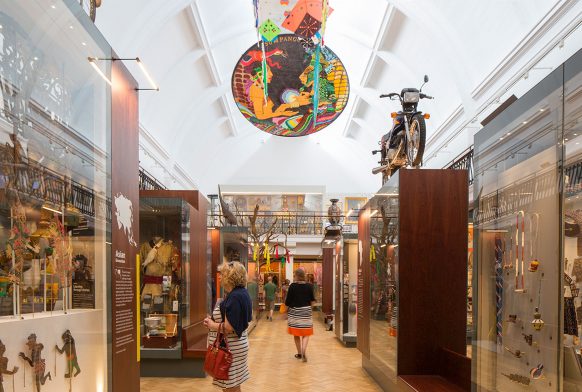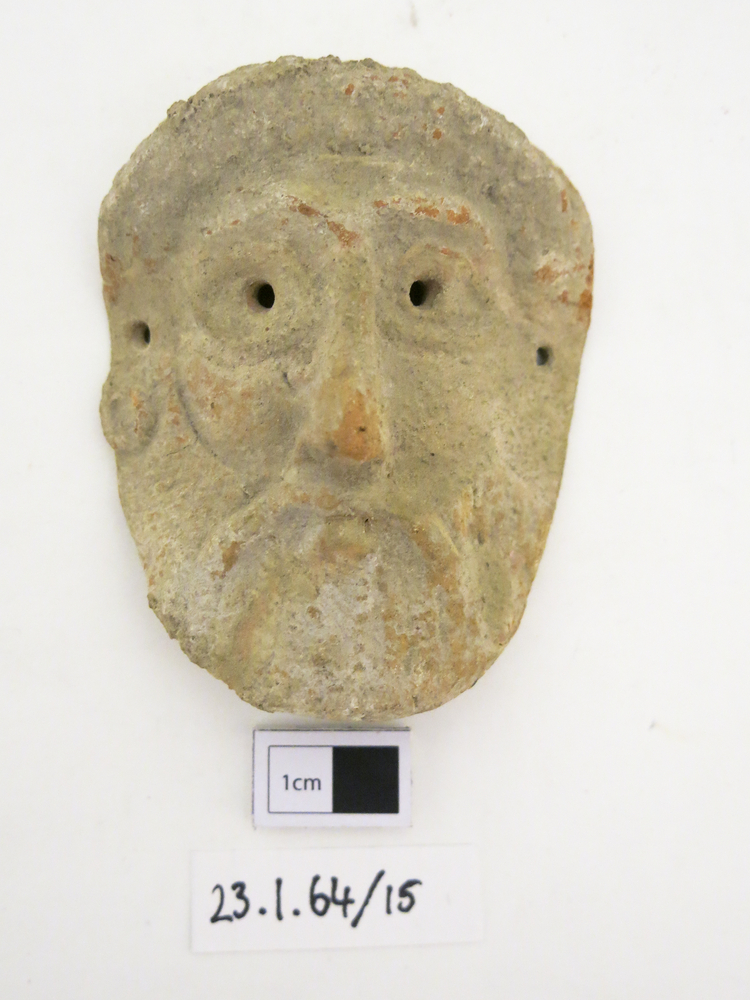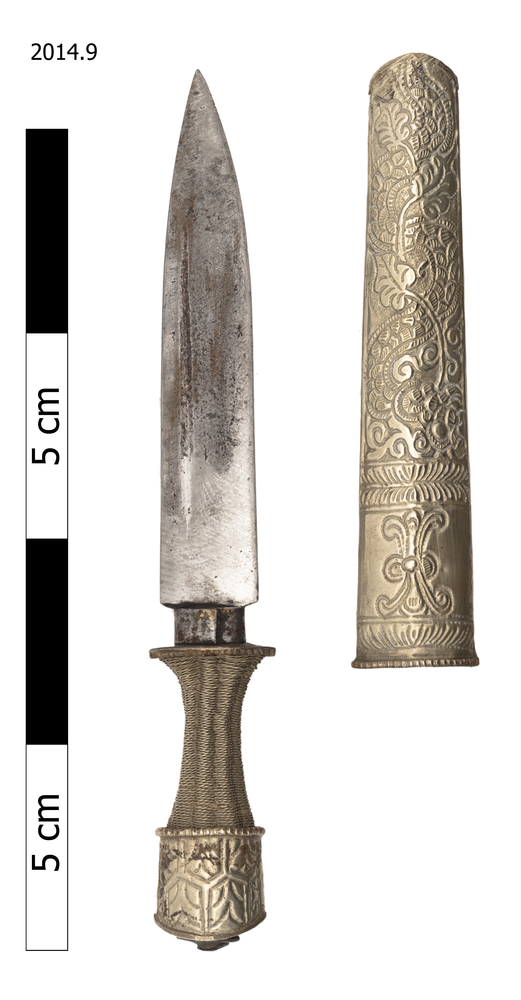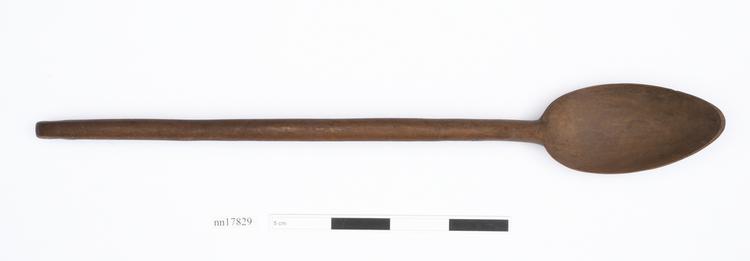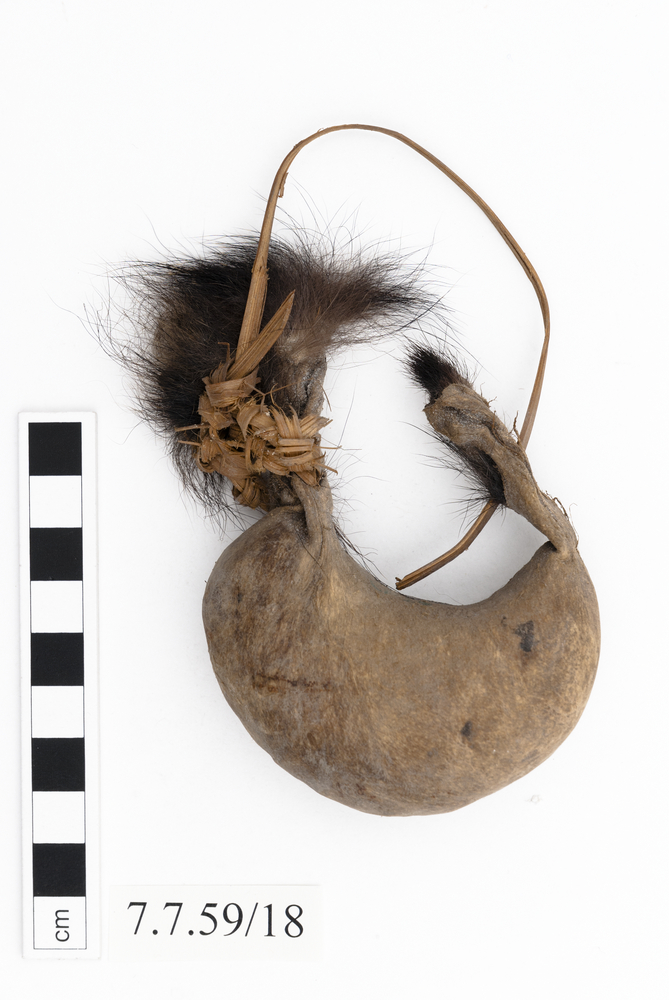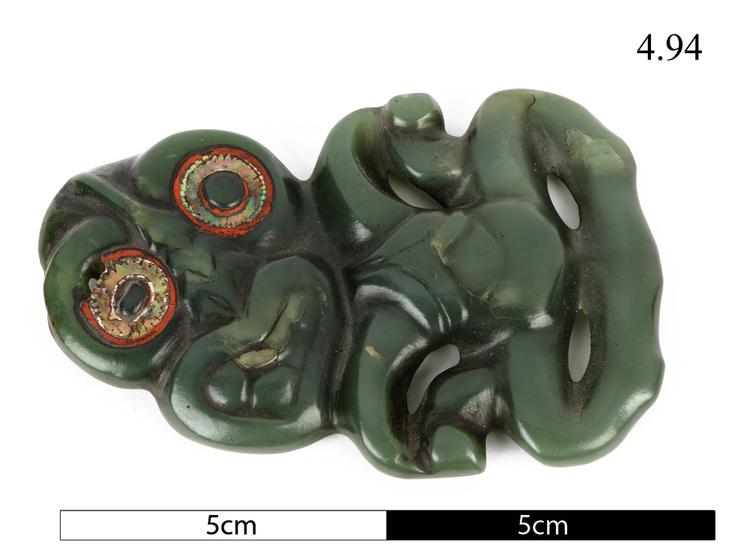
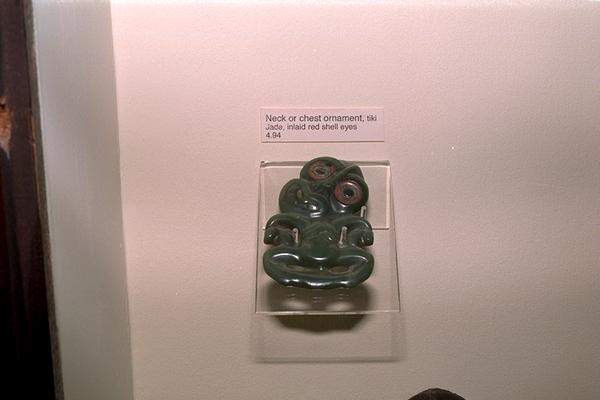
Maori jade hei tiki pendant with inlaid shell eyes with red rings. The remnants of an old label are stuck to the back of the object, but the writing is illegible.
Nephrite Pendant, Hei Tiki, Maori People, New Zealand. The jade-like pounamu (nephrite or Bowenite) was the most precious of all stones for the Maori people. It was largely sourced from the Ngai Tahu iwi (clan), who have extracted the stone from the bed of the Arahura River on the northern west coast of the South Island for centuries. The creation of adze blades for woodworking was a key role for pounamu, because it takes a sharper blade than other available stones. The formation of a hei tiki pendant, however, was of great difficulty, precisely because of the stone’s hardness. Typically, four perforations were made in each hei tiki to outline the loops of contorted arms and legs. Remarkably, this was achieved with a pointed wooden stick, abrasive beach sand, and a great deal of care and patience. There is good historical evidence that hei tiki were not very popular in the later 18th Century, when Western observation and collecting began, but they became immensely popular and much commoner with the introduction of Western steel tools. Some scholars have understood this increase in hei tiki production as stemming from the greater stone-working power of the Western tools, while others, interestingly, have suggested that Western importation of steel blades for adzes meant that pounamu blades were then surplus to requirement, and could be re-used as large pendants. Certainly, hei tiki take the same flat, slightly tapering shape and size of pounamu adze blades. Traditional Maori understandings (korero o mua) state that hei tiki represent the human foetus, and that is why the feet are incurved and the head enlarged. We might also add that human images as far away as Western Polynesia have similarly enlarged heads, which were there viewed as a mark of beauty and mana (spiritual power). Worn around the neck on a finely plaited cord with a bone or ivory toggle, they were viewed as having the power to promote fertility and aid conception. Nephrite. Early 19th Century. Presented to Mr J. J. Barwick (then a child) from a Maori friend of his father, in the North Island circa 1845; given by him to the Horniman Museum in 1904.



